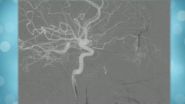(Press-News.org) This news release is available in German.
FRANKFURT Parkinson's Disease is the second most common neurodegenerative disorder. In Germany alone, almost half a million people are affected. The focus of the disease is the progressive degeneration of dopamine-producing nerve cells in a certain region of the midbrain, the substantia nigra. Misfolded proteins are the cause. Until recently, it was unclear why damage is confined to specific nerve cells. A team or researchers led by Frankfurt neurophysiologists has now defined how this selective disease process begins using a genetic mouse model of Parkinson;s disease.
The progressive death of a certain type of nerve cells – dopaminergic neurons - in the substantia nigra causes dopamine deficiency, which is the major cause for the motor deficits in Parkinson patients. Although it is possible to therapeutically compensate the dopamine deficiency for a certain period of time, by e.g. administration of L-dopa or dopamine agonists, these therapies do not stop the progressive death of neurons.
In the last two decades, researchers have identified gene mutations and toxic protein aggregates to cause neurodegeneration, with the protein a-synuclein having an essential role. Until recently, it was unclear why only specific types of nerve cells, such as dopaninergic neurons in the substantia nigra, are affected by this process, while others, also expressing the mutant a-syncuclein such as dopaminergic neurons in the immediate vicinity, survive the disease process with little damage.
The research group led by Dr. Mahalakshmi Subramaniam and Prof. Jochen Roeper at the Institute for Neurophysiology at the Goethe University, in collaboration with researchers from Frankfurt's Experimental Neurology Group and from Freiburg University, demonstrated for the first time how sensitive dopaminergic substantia nigra neurons functionally respond to toxic proteins in a genetic mouse model. A mutated a-synculein gene (A53T), which causes Parkinson's Disease in humans, is expressed in the mouse model.
In the current issue of the Journal of Neuroscience, the researchers report that the sensitive dopaminergic substantia nigra neurons respond to the accumulation of toxic protein by significantly increasing the electric activity in the affected midbrain regions. In contrast, the less sensitive, neighboring dopaminergic neurons were not affected in their activity. "This process begins as early as one year before the first deficits appear in the dopamine system, and as such it presents an early functional biomarker that may have future potential for preclinical detection of impending Parkinson's Disease in humans," explains Prof. Jochen Roeper. "The potential for early preclinical detection of subjects at risk is essential for the development of neuroprotective therapies."
The Frankfurt group, also identified a regulatory protein, an ion channel, which is causes the increase in electric activity and the associated stress in nerve cells in response to oxidative damage. This channel provides a direct new target protein for the neuroprotection of dopaminergic neurons. In brain slices, the dysfunction of this ion channel acting as an "electric brake" for dopamine neurons was reversible just by adding redox buffers. If therapeutic drugs could reduce the channel´s redox sensitivity in future mouse models, the death of dopaminergic neurons in the substantia nigra might be prevented. Currently, the researchers are studying whether similar processes occur with other Parkinson genes and in aging itself. "The long-term objective is to investigate the extent to which these results from mice might be transferred to humans," says Roeper.
INFORMATION:
Publikation: Mahalakshmi Subramaniam et al.: Mutant a-Synuclein Enhances Firing Frequencies in Dopamine Substantia Nigra Neurons by Oxidative Impairment of A-Type Potassium Channels, The Journal of Neuroscience, October 8, 2014 • 34(41):13586 –13599. doi:10.1523/JNEUROSCI.5069-13.2014.
Information: Prof. Dr. med. Jochen Roeper, Institute of Neurophysiology
Goethe University Frankfurt, Phone +49(0)69 6301–84091, roeper@em.uni-frankfurt.de.
The Goethe University is an institution with particularly strong research capabilities based in the European financial metropolis of Frankfurt. It celebrates its 100th year of existence in 2014. The university was founded in 1914 through private means from liberally-orientated citizens of Frankfurt and has devoted itself to fulfilling its motto "Science for the Society" in its research and teaching activity right up to the present day. Many of the founding donors were of Jewish origin. During the last 100 years, the pioneering services offered by the Goethe University have impacted the fields of social, societal and economic sciences, chemistry, quantum physics, neurological research and labour law. On January 1st, 2008, it achieved an exceptional degree of independence as it returned to its historical roots as a privately funded university. Today it is one of the ten universities that are most successful in obtaining external research funding and one of the three largest universities in Germany with centres of excellence in medicine, life sciences and humanities.
Publisher: The president of the Goethe University Frankfurt am Main. Editorial department: Dr. Anke Sauter, Science editor, Department Marketing and Communications, Grüneburgplatz 1, 60629 Frankfurt am Main, Phone: (069) 798-12498.
Parkinson: How toxic proteins stress nerve cells
Biomarkers and target proteins identified in vulnerable neurons
2014-10-14
ELSE PRESS RELEASES FROM THIS DATE:
Researchers identify potential drug that could help treat cystic fibrosis
2014-10-14
From an early age, the lungs of individuals with cystic fibrosis (CF) are colonised and infected by bacteria, a common example being S. aureus. These bacterial infections cause the lungs to become inflamed, infected, and can eventually lead to permanent lung damage. Researchers from the University of Pennsylvania and the Howard Hughes Medical Institute previously showed that an enzyme called Sphingomyelin phosphodiesterase C (SMaseC) produced by the S. aureus bacterium may harm the health of CF patients. Now, they have discovered an inhibitor for this pathogenic bacterial ...
More physical activity improved school performance
2014-10-14
Just two hours of extra physical activity each week can improve school performance. This has been shown by a study of approximately 2,000 twelve-year-olds carried out by scientists at the Sahlgrenska Academy, University of Gothenburg.
The scientists Lina Bunketorp Käll, Michael Nilsson and Thomas Linden, at the Centre for Brain Repair and Rehabilitation at the Sahlgrenska Academy, University of Gothenburg, have tested the hypothesis that increased physical activity stimulates learning and improves school performance.
In the study, published in the scientific periodical ...
The neuroscience of holding it
2014-10-14
Wherever you are right now: squeeze your glutes. Feel that? You just also contracted your pelvic floor too, whether you wanted to or not.
Scientists studying the source of chronic abdominal and pelvic floor pain found an unexpected connection in the brain between the pelvic floor – the muscle responsible for, among other things, keeping you from peeing your pants – and various muscles throughout the body. They've found some evidence for a link as far away as the toes (try tapping a toe and see if you feel the clench), but the strongest link so far is with ...
Rediscovering Venus to find faraway earths
2014-10-14
WASHINGTON, Oct. 14, 2014—Astronomers Chih-Hao Li and David Phillips of the Harvard-Smithsonian Center for Astrophysics want to rediscover Venus—that familiar, nearby planet stargazers can see with the naked eye much of the year.
Granted, humans first discovered Venus in ancient times. But Li and Phillips have something distinctly modern in mind. They plan to find the second planet again using a powerful new optical device installed on the Italian National Telescope that will measure Venus' precise gravitational pull on the sun. If they succeed, their first-of-its-kind ...
US college students eat their vegetables. Really?!
2014-10-14
U.S. college students do better than their counterparts in the United Kingdom when it comes to physical activity, a healthy diet and less smoking, according to new research published in the latest issue of the journal Education and Health.
"Among U.S. students, we see greater consumption of fruits and vegetables, more participation in organized sports, and less smoking," said American University Prof. Stacey Snelling, a lead study author. "Participation in organized sports and exercise could reflect the more formal focus on physical activity at the college level that ...
Teachable moments about climate change
2014-10-14
First-hand experience of extreme weather often makes people change their minds about the realities of climate change. That's because people are simply more aware of an extreme weather event the closer they are to its core, and the more intense the incidence is. So says Peter Howe of Utah State University in the US, who led a study in Springer's journal Climatic Change Letters about people's ability to accurately recall living through extreme weather events. It also focused on how people's proximity to such events – the so-called "shadow of experience" – aids ...
New 'tree of life' traces evolution of a mysterious cotinga birds
2014-10-14
Ithaca, N.Y.—They are some of the brightest, loudest, oddest-looking, least-understood birds on the planet. Some have bulbous crests, long fleshy wattles, or Elvis-worthy pompadours in addition to electric blue, deep purple, or screaming orange feathers. But thanks to a comprehensive new evolutionary "tree of life" generated for the tropical cotinga family of South America, the door is now open to new discoveries about the more than 60 species in this amazingly diverse group of birds.
"Our study provides comprehensive insight into how nearly all the cotinga species ...
Current models for predicting outcomes after mild traumatic brain injury perform poorly
2014-10-14
New Rochelle, NY, October 14, 2014—For the 5-15% of patients with mild traumatic brain injury (mTBI) who will have lingering physical, behavioral, or cognitive problems 3 to 6 months after their injury, identification of this at-risk population is essential for early intervention. Existing models used to predict poor outcomes after mTBI are unsatisfactory, according to a new study, and new, more relevant predictive factors are different than those used in cases of moderate or severe TBI, as described in the study published in Journal of Neurotrauma, a peer-reviewed ...
New treatment designed to save more eyes from cancer
2014-10-14
VIDEO:
Some children with advanced retinoblastoma are not good candidates for conventional intraocular ophthalmic infusion therapy -- too often making removal of the eye the only viable treatment for saving their...
Click here for more information.
CINCINNATI – Doctors at Cincinnati Children's Hospital Medical Center have developed a new technique for treating the eye cancer retinoblastoma to improve the odds for preventing eye loss, blindness or death in children with ...
NASA sees Hurricane Gonzalo head toward Bermuda
2014-10-14
Tropical Storm Gonzalo intensified into a hurricane late on Monday, Oct. 14 and is expected to become a major hurricane as it moves toward Bermuda. NASA's Aqua satellite saw powerful thunderstorms within the center of the storm that were dropping heavy rainfall.
At 5 pm EDT, on Oct. 13 Gonzalo had become a hurricane. At that time, the center of the storm was just 20 miles southeast of St. Martin. The National Hurricane Center (NHC) noted that maximum sustained winds had increased to near 75 mph (120 kph) and additional strengthening was forecast. Gonzalo continued moving ...
LAST 30 PRESS RELEASES:
Tracing the quick synthesis of an industrially important catalyst
New software sheds light on cancer’s hidden genetic networks
UT Health San Antonio awarded $3 million in CPRIT grants to bolster cancer research and prevention efforts in South Texas
Third symposium spotlights global challenge of new contaminants in China’s fight against pollution
From straw to soil harmony: International team reveals how biochar supercharges carbon-smart farming
Myeloma: How AI is redrawing the map of cancer care
Manhattan E. Charurat, Ph.D., MHS invested as the Homer and Martha Gudelsky Distinguished Professor in Medicine at the University of Maryland School of Medicine
Insilico Medicine’s Pharma.AI Q4 Winter Launch Recap: Revolutionizing drug discovery with cutting-edge AI innovations, accelerating the path to pharmaceutical superintelligence
Nanoplastics have diet-dependent impacts on digestive system health
Brain neuron death occurs throughout life and increases with age, a natural human protein drug may halt neuron death in Alzheimer’s disease
SPIE and CLP announce the recipients of the 2025 Advanced Photonics Young Innovator Award
Lessons from the Caldor Fire’s Christmas Valley ‘Miracle’
Ant societies rose by trading individual protection for collective power
Research reveals how ancient viral DNA shapes early embryonic development
A molecular gatekeeper that controls protein synthesis
New ‘cloaking device’ concept to shield sensitive tech from magnetic fields
Researchers show impact of mountain building and climate change on alpine biodiversity
Study models the transition from Neanderthals to modern humans in Europe
University of Phoenix College of Doctoral Studies releases white paper on AI-driven skilling to reduce burnout and restore worker autonomy
AIs fail at the game of visual “telephone”
The levers for a sustainable food system
Potential changes in US homelessness by ending federal support for housing first programs
Vulnerability of large language models to prompt injection when providing medical advice
Researchers develop new system for high-energy-density, long-life, multi-electron transfer bromine-based flow batteries
Ending federal support for housing first programs could increase U.S. homelessness by 5% in one year, new JAMA study finds
New research uncovers molecular ‘safety switch’ shielding cancers from immune attack
Bacteria resisting viral infection can still sink carbon to ocean floor
Younger biological age may increase depression risk in older women during COVID-19
Bharat Innovates 2026 National Basecamp Showcases India’s Most Promising Deep-Tech Ventures
Here’s what determines whether your income level rises or falls
[Press-News.org] Parkinson: How toxic proteins stress nerve cellsBiomarkers and target proteins identified in vulnerable neurons





